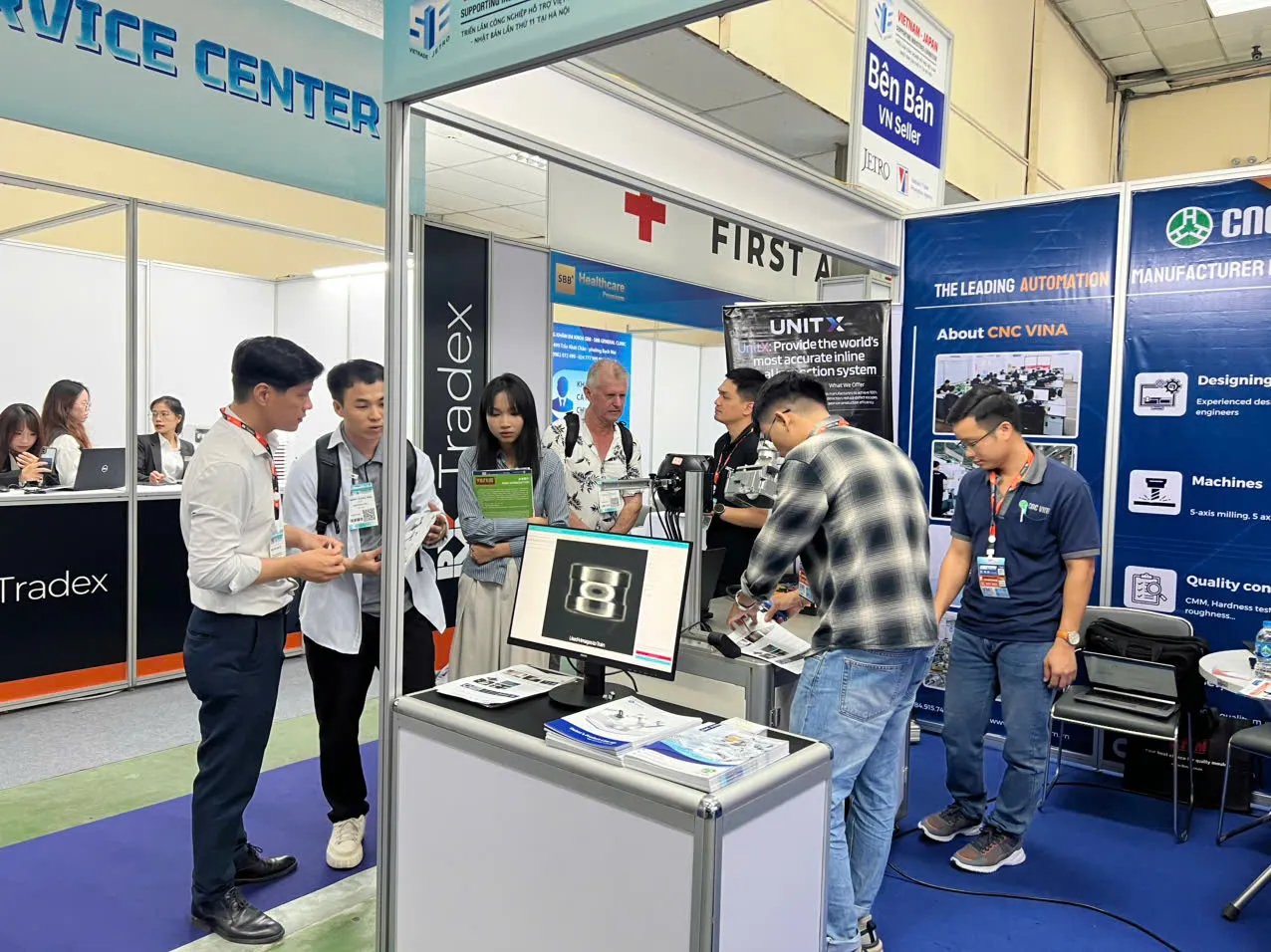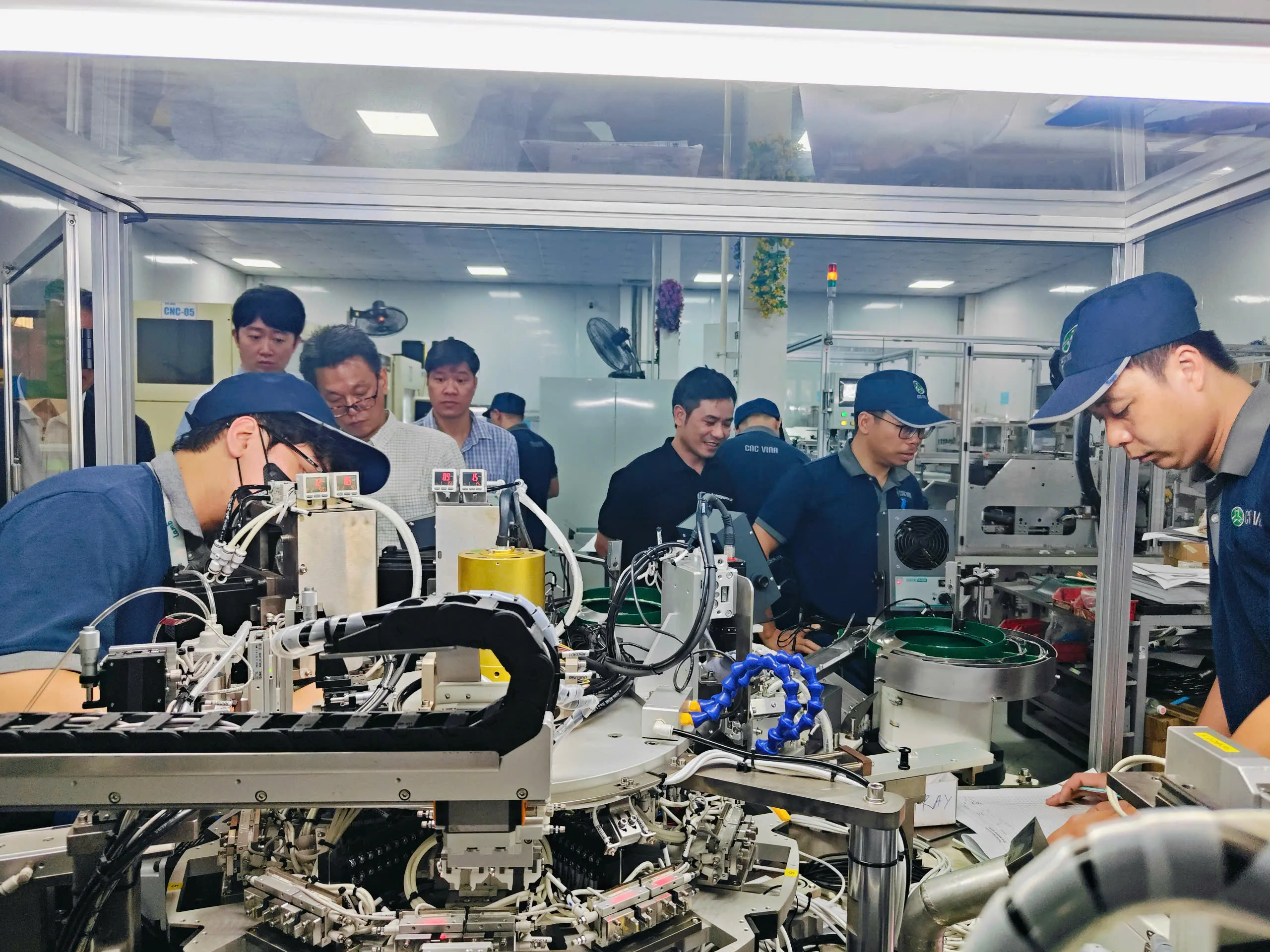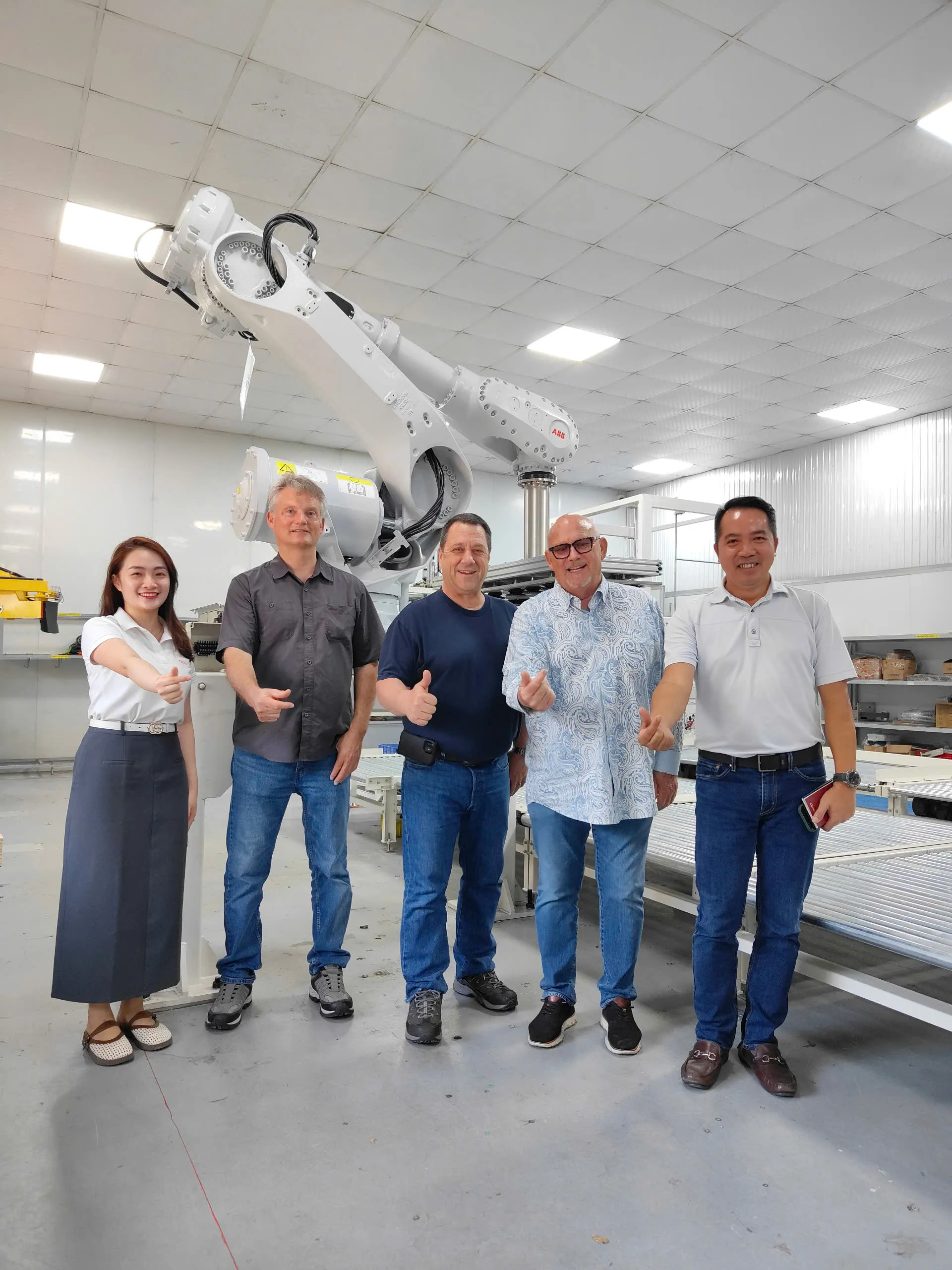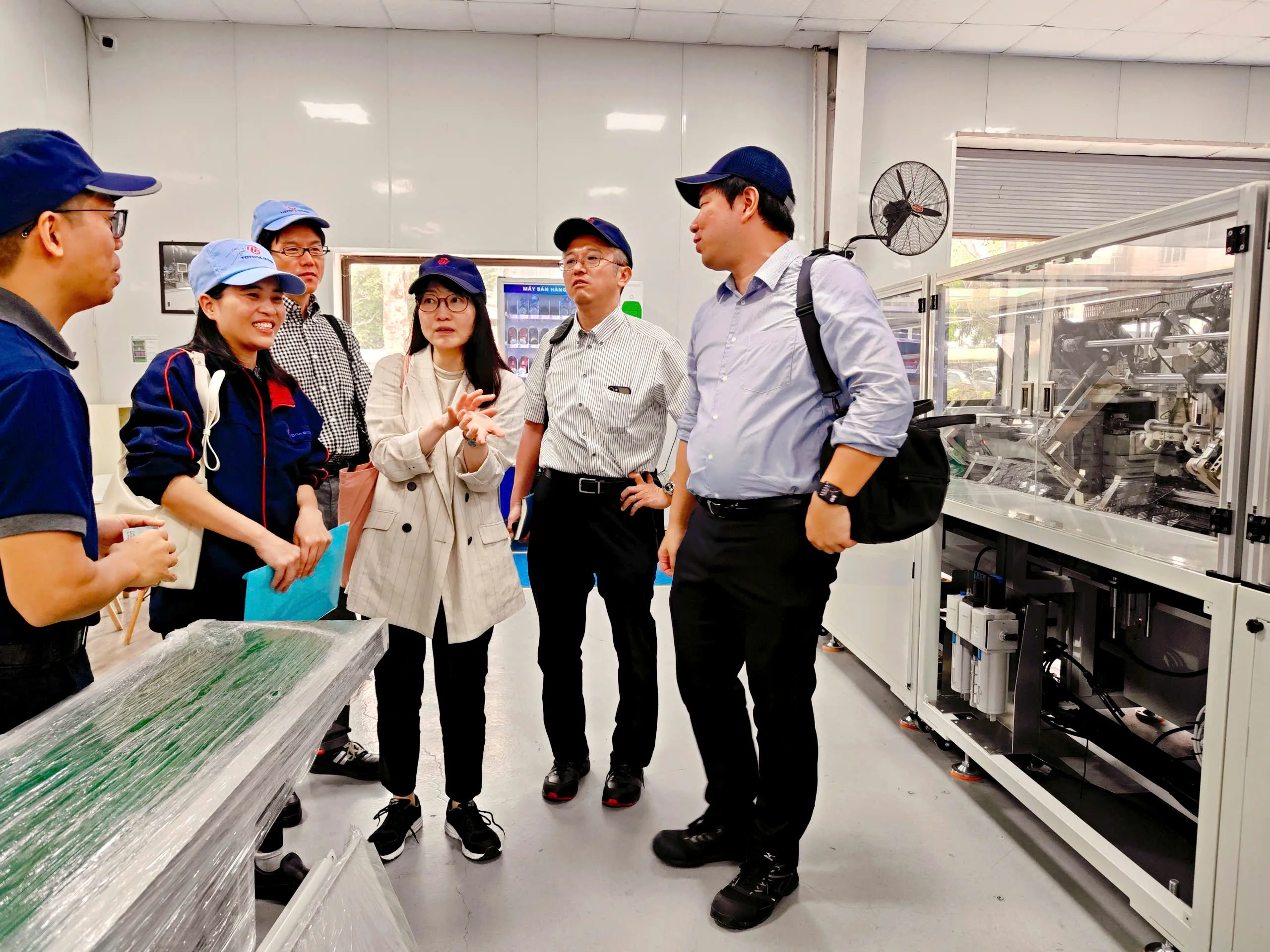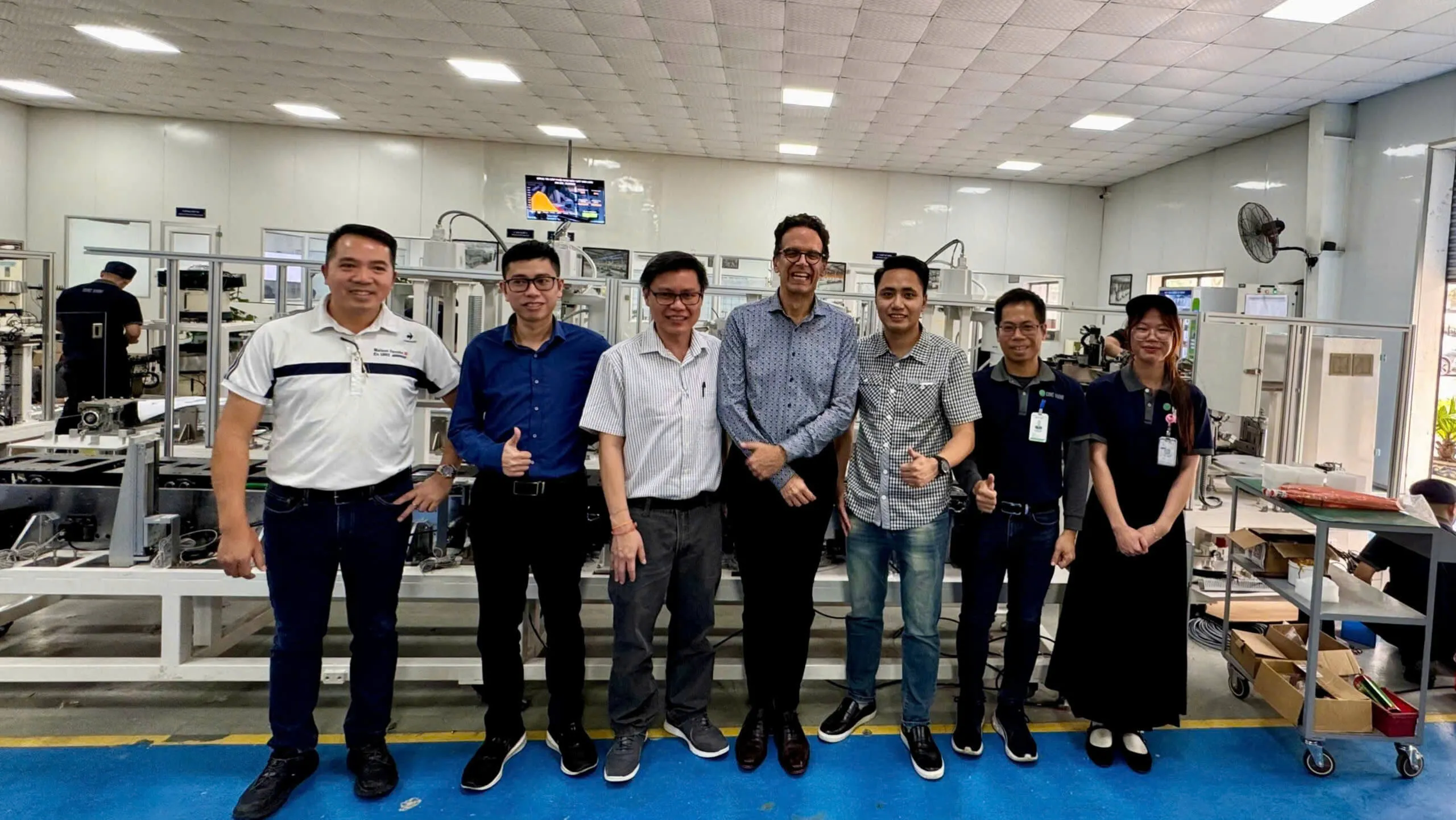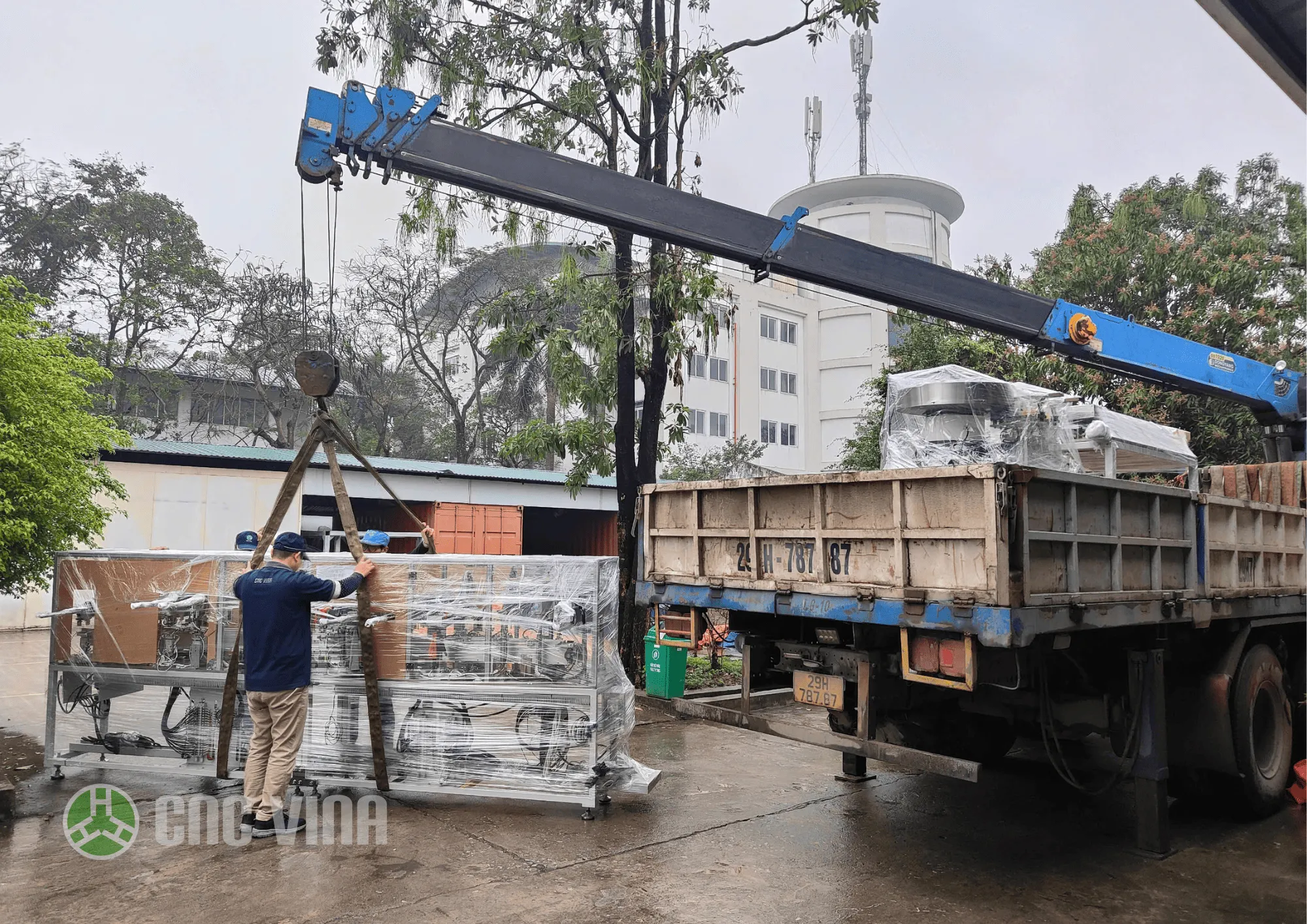Comprehensive guide to hot melt glue machines: Features, applications and benefits
Introduction to hot melt glue dispenser machine
Definition of hot melt glue dispenser
The hot melt glue dispenser is a device used in various industries. It distributes a precise amount of adhesive based on pre-set parameters, ensuring clean and aesthetic completion of circuit boards and assembled components.
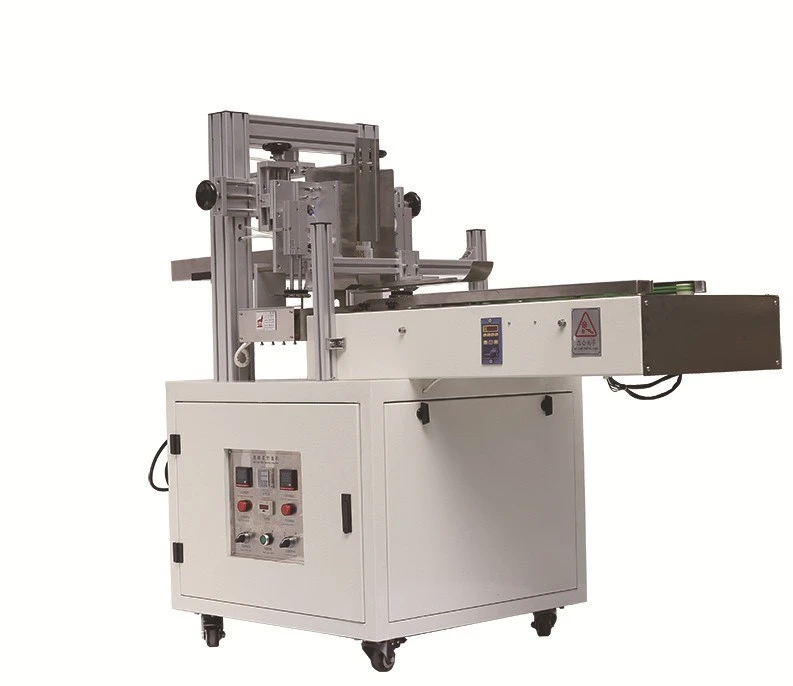
With programmable X, Y, and Z axes, the machine can apply glue accurately at each point with precise volumes as defined in the settings.
The hot melt glue dispenser operates by applying vacuum pressure to the glue tube, pushing out a suitable amount of glue. The system is typically equipped with various accessories such as glue guns, glue cartridges, AB glue mixing tubes, pressure tanks, and glue dispensing valves, ranging in size to meet different user requirements.
Importance of hot melt glue dispensers across industries
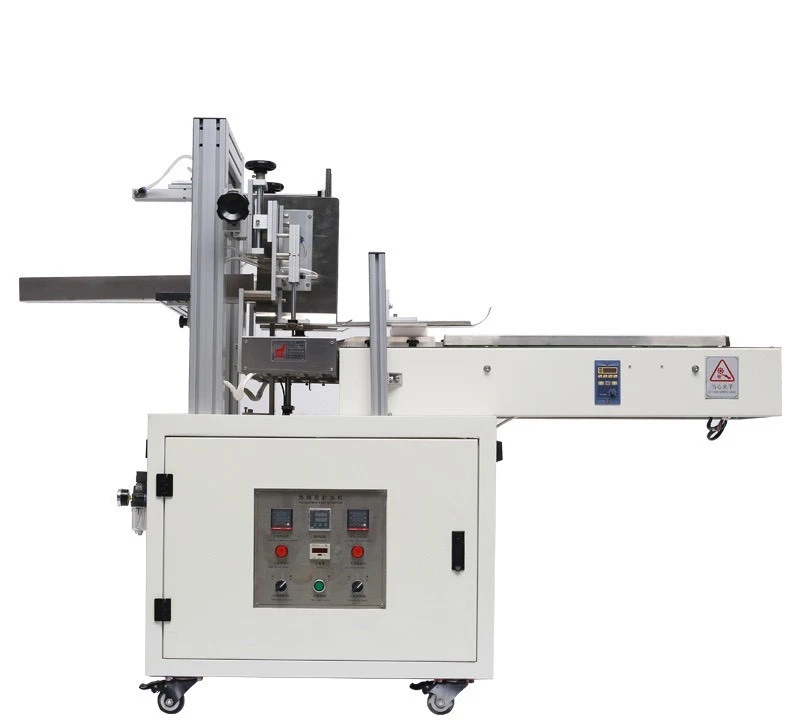
As electronic devices become smaller, the demand for efficient thermal management solutions increases. Hot melt adhesives play a crucial role in meeting this need by offering reliable and effective bonding with excellent thermal conductivity.
The growing adoption of advanced electronic devices, rising automation and digitalization trends, and increasing focus on energy efficiency are key factors driving market growth. Additionally, the use of hot melt adhesives is expanding in industries such as automotive, aerospace, and medical devices.
Features of the hot melt glue dispenser
High temperature range
Most hot melt glue machines on the market feature 4 to 5 temperature settings. Choosing the right machine depends on your specific application — whether you're binding hard covers or soft paperbacks, certain parameters must be considered.
If your machine lacks the proper temperature settings, you may be forced to rebind the cover twice to achieve a proper adhesive bond.
Multiple nozzle options
Different nozzle sizes for various applications
Interchangeable nozzles for flexibility
User-Friendly control panel
The controller can adjust both temperature and air pressure, enabling more accurate glue control and smoother glue flow without stretching. We can customize different models based on product and glue requirements.

The control unit includes a thermostat, flow regulator, air pressure gauge, and backflow valve. The thermostat melts the glue efficiently for smooth flow. The regulator manages glue output, ensuring speed and precision. The pressure gauge provides a visual of the air pressure for convenient adjustments, while the backflow valve helps minimize glue residue on the needle, preventing glue stringing.
Sturdy construction
Fixture component: The dispenser head fixture is made from aluminum alloy, effectively preventing melting issues caused by high heat. The screw-lock structure allows for flexible and quick glue replacement.
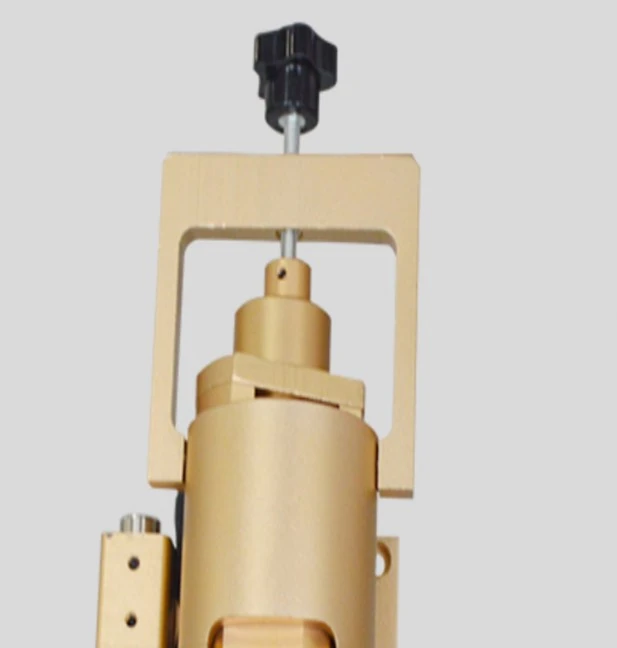
Dispensing port: At the bottom of the dispenser head, there is a small hole for inserting a stainless steel needle. Cone-shaped needles can also be used, which are better suited for high-precision glue dispensing.
Glue insertion area: Various forms of hot melt glue can be loaded into the dispenser head, such as glue sticks, glue pellets, and glue blocks. Melted glue can also be placed into a syringe, which is then inserted into the dispensing valve. The syringe used must be heat-resistant and not prone to melting or leaking.
Outer shell: The outer casing of the dispenser head is made of Teflon insulation material, which effectively maintains internal temperature. This provides excellent thermal insulation and safety from high-temperature risks.
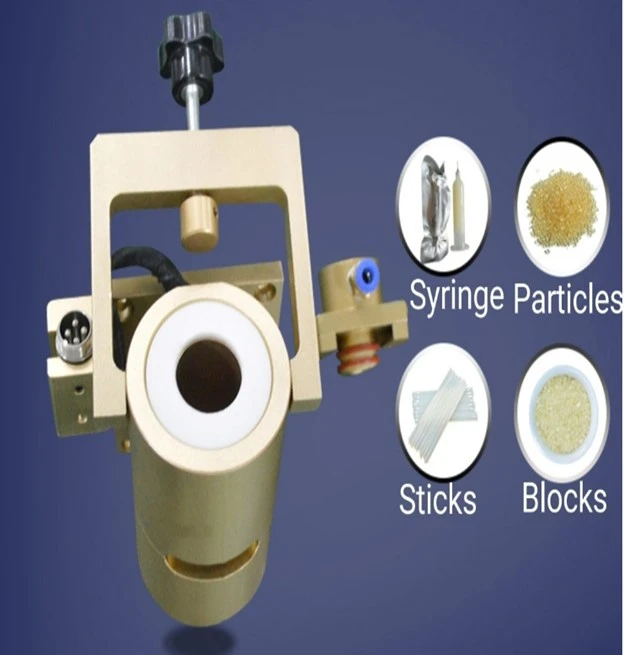
Applications of hot melt glue machines
Industrial applications
It can be said that the printing and packaging industries are essential sectors in both daily life and manufacturing. Packaging and wrapping can be found in nearly every product we use daily.
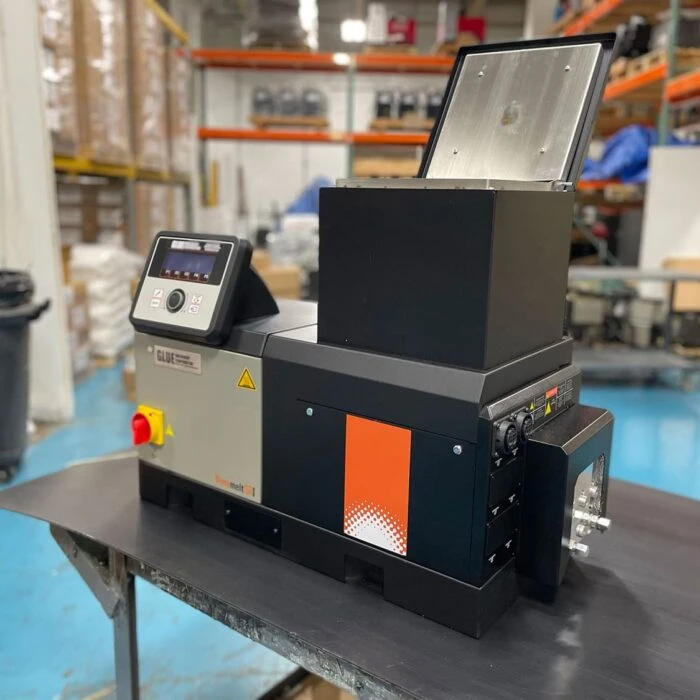
These packages vary widely in design, types, materials, colors, and usage purposes. Whether made of plastic, paper, or nylon, packaging almost always involves the use of hot melt adhesives, glues, etc., for sealing, reinforcing, or assembling boxes, cartons, and paper bags. The hot melt adhesive machine is an indispensable tool in this process.
The hot melt adhesive machine is essentially a pumping device that actively contributes to the production stages of printing, packaging, ink, and paper industries.
In these fields, diaphragm pumps are used to transfer pulp and raw materials with strong thrust, durability, and adjustable flow rates. Pneumatic diaphragm pumps ensure smooth and high-efficiency circulation of adhesives and ink.
This is especially true for thick, corrosive adhesives that tend to stick to pipelines, where pneumatic diaphragm pumps are almost the only devices capable of handling such materials.
Diaphragm pumps can handle a variety of adhesive types, including: hot melt adhesives, glue pellets, PSA glue, cake glue, hot melt glue, paper laminating glue, film laminating/bonding glue, and release film glue.
In the automotive industry, silicone adhesives play a vital role in waterproofing, sound insulation, bonding, and protecting vehicle components. They ensure the stability and performance of car parts under harsh conditions throughout the vehicle's lifespan.
Until recently, consumer electronics were one of the latest applications for hot melt adhesives. Today, new generations of hot melt adhesives—manufactured with advanced technologies—are used in the assembly of smartphones, tablets, wearable devices, wireless speakers, and other mobile electronics.
This is a real-world example of the importance of hot melt adhesives in the electronics industry in general and the consumer electronics sector in particular.
Craft and hobby applications
Vietnam’s handicraft industry has maintained its traditional value and is highly appreciated in international markets. However, with the current development trends—especially competition from countries with advanced science and technology—there is a need for strategic investment in technology, design innovation, branding, and trade promotion to ensure sustainable growth.
To improve productivity and quality, we must continuously enhance craftsmanship and upgrade material sources. Along with these efforts, hot melt adhesives play an essential role.
Vietnamese handicrafts are extremely diverse and include: home decor and handicrafts; indoor and outdoor wooden furniture; household textiles and lace embroidery; gifts and ethnic minority products; jewelry and personal accessories, and many other handmade goods.
Benefits of hot melt adhesive machines
Flexibility
Hot melt adhesives offer unique advantages, such as resistance to heat, electricity, and chemicals, as well as thermal and electrical conductivity and mechanical strength.
Industry professionals can even work with adhesive manufacturers to create custom adhesive formulas tailored to specific needs. This high degree of flexibility is unmatched by other bonding methods like welding or fasteners, which only work with metal substrates and may damage structural integrity.
Time and cost efficiency
Hot melt adhesives improve cost-efficiency in manufacturing by reducing operation time for large-scale production and enhancing productivity. This improved efficiency can lower overall production costs.
Hot melt adhesives are also durable and can withstand long-term wear, saving money over time. They’re easy to apply and allow for adjustments before curing, reducing the need for rework.
In contrast, rivets and screws require thicker metal to withstand pressure, increasing material costs. Other substrates like ceramics and glass may also suffer structural weakening when modified for fasteners. Hot melt adhesives eliminate these extra steps and reduce expenses.
Precision
Hot melt adhesives are lightweight and offer higher strength and stability than other methods. They provide robust adhesion across the entire structure, even with difficult substrates. Their strong mechanical properties and resistance to environmental conditions provide unmatched safety for end users.
High-performance hot melt adhesives ensure reliable bonding in safety-critical industries like construction. They can also be engineered with additional properties—such as electrical and chemical resistance—to prevent short circuits and fires in electronic components.
Because of their safety and reliability, many industries are shifting toward hot melt adhesive solutions designed to meet specific production needs.
Productivity boost
Hot melt adhesives reduce part assembly time and preparation time compared to traditional methods. Technological advancements in adhesives have made processing and curing possible within seconds, significantly cutting down total production time. This helps assembly line workers become more efficient, increasing overall productivity and profitability.
The preparation, application, and curing of adhesives also require significantly less time than welding or brazing. Some adhesives offer heat and electrical resistance and conductivity, eliminating the need for specialized coatings. Hot melt adhesives also resist weather and external factors, minimizing downtime and ongoing maintenance.
Maintenance and care
Cleaning and maintenance procedures
Regularly clean machinery after each workday, use compressed air to remove dust from internal slots, and inspect vacuum and suction systems. These cleaning steps help detect potential issues early for timely intervention.
Glue pot cleaning: Remove residual adhesive from the glue pot to ensure high bonding performance for the next use. Choosing the right glue is also crucial—the key rule is that the glue pot temperature must be lower than the roller’s to prevent glue hardening on the pot surface.
Use the correct adhesive and regularly check whether it sticks to the glue pot or other machine components, and clean them promptly.
Lubrication: Lubricate the machine to reduce friction on parts like sliding rails, chains, bearings, and pneumatic systems for smooth operation.
Technical parameter checks: Incorrect settings can affect machine components. Regularly inspect parameters such as chain tension, air pressure, and dimension positions.
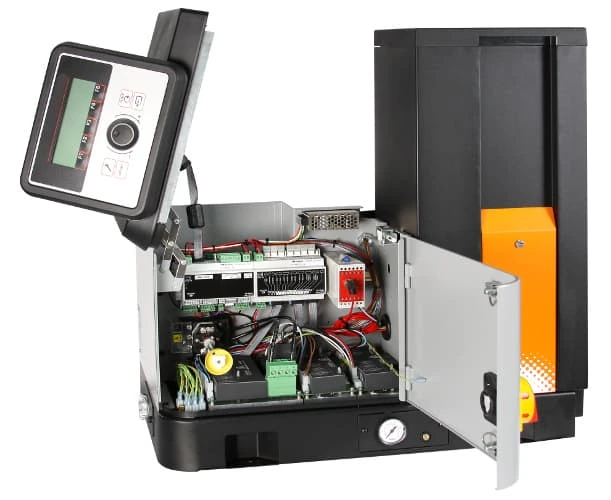
Routine inspections and maintenance
The Toyota Production System (TPS) is a manufacturing philosophy and set of principles developed by Toyota in Japan. It is a comprehensive management system encompassing all aspects of production, including design, procurement, assembly, and quality control.
The goal of TPS is to produce high-quality products with minimal waste using continuous improvement systems and respect for people. The system focuses on eliminating waste and any activity that doesn’t add value to the product or process, including overproduction, waiting time, unnecessary transport, over-processing, and surplus inventory.
Proper handling and storage
Glue loading: When adding glue to the left side, wait for it to melt before starting the machine. When adding to the right side, no waiting is needed.
Temperature control panel: Automatic or manual (commonly set to 150°C).
Temperature keeping/Past head: Maintains glue temperature during downtime.
Speed level/Pressure setting: Choose between levels 1 or 2.
Count value: Tracks the number of rolls from start to stop.
Conclusion
Using hot melt adhesives in place of mechanical fasteners can be highly advantageous for many industries. Hot melt adhesives offer several performance and design benefits that traditional methods cannot match. Industries such as aerospace, construction, electronics, automotive, oil, and chemicals can all benefit from reduced weight, structural stability, and environmental resistance provided by hot melt adhesives. If you have any interest or questions about hot melt adhesive machines, don’t hesitate to contact CNC VINA for the most timely consultation and quotation!

 Tiếng
Anh
Tiếng
Anh



 Tiếng Anh
Tiếng Anh

